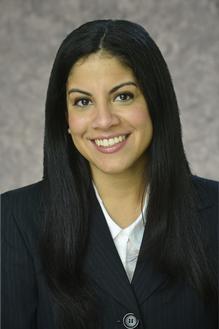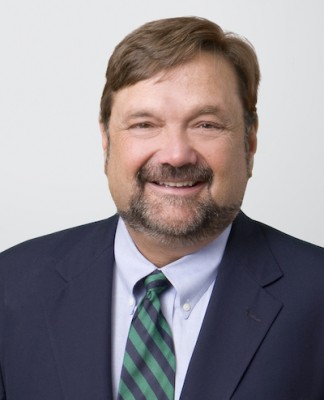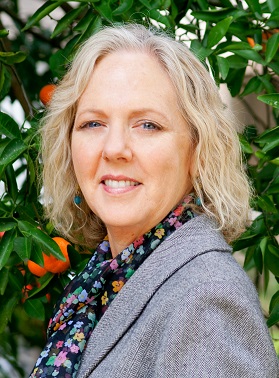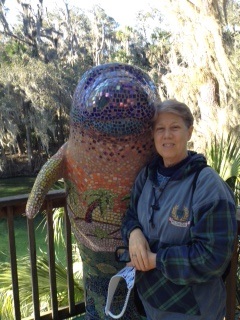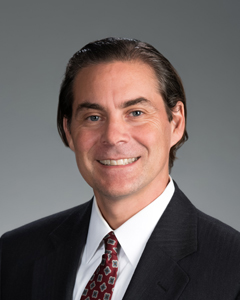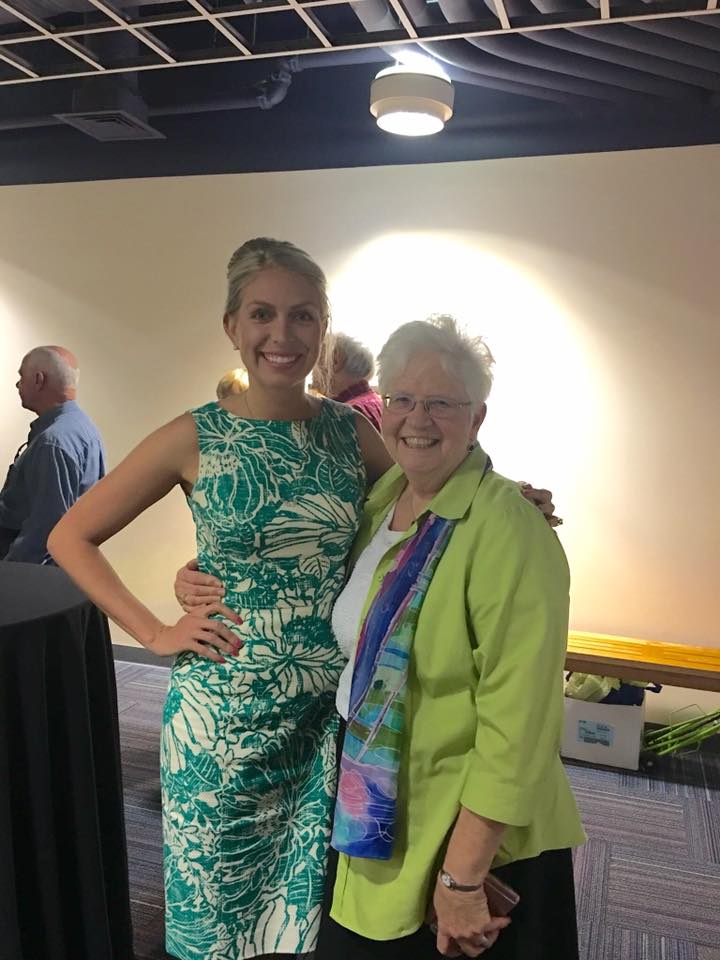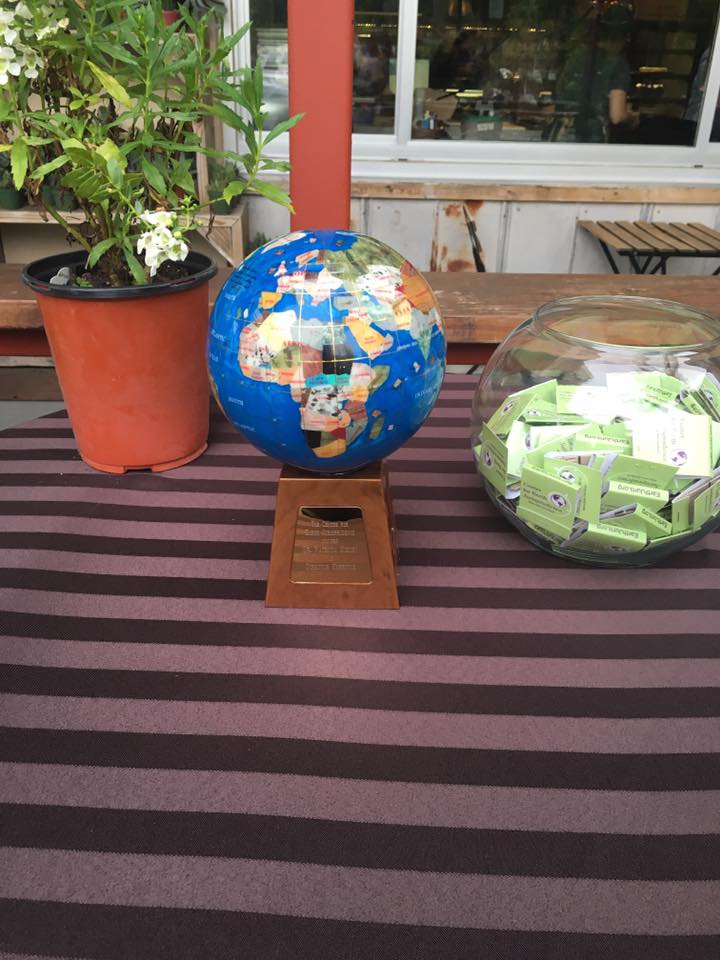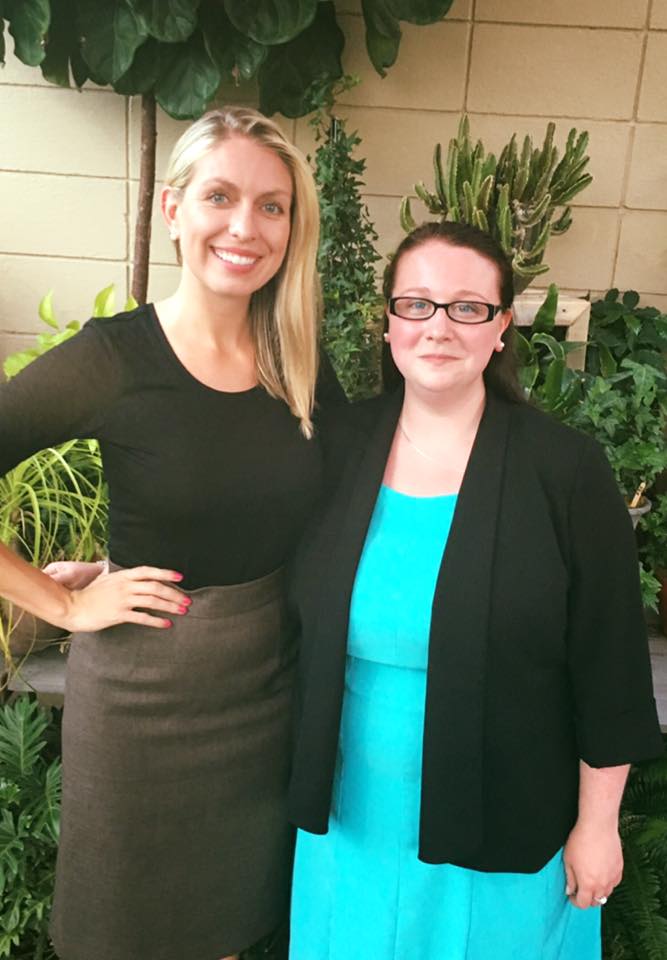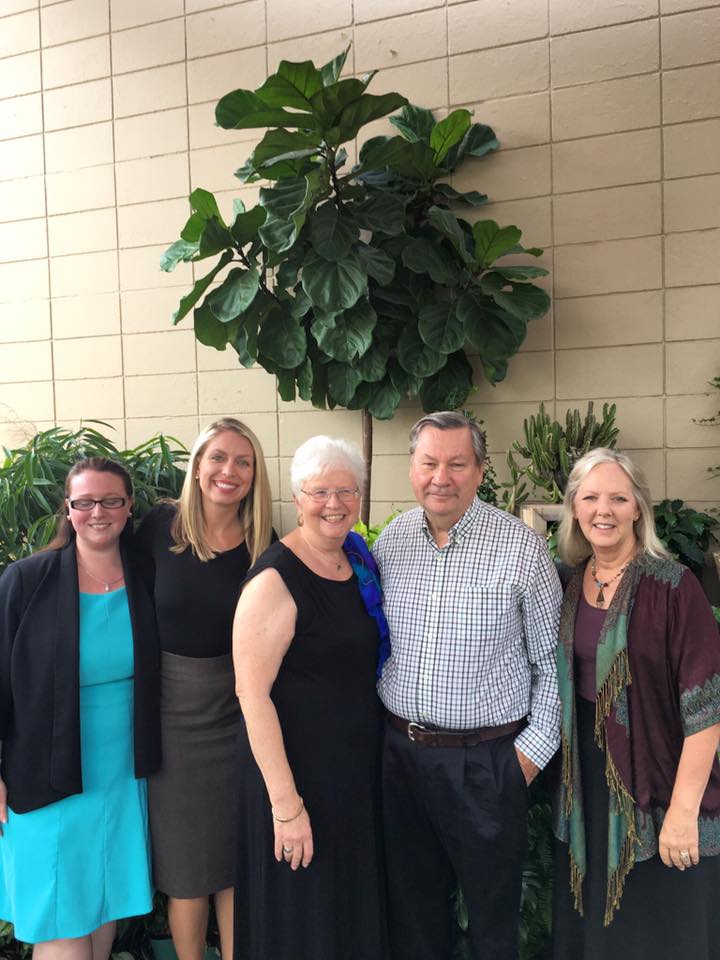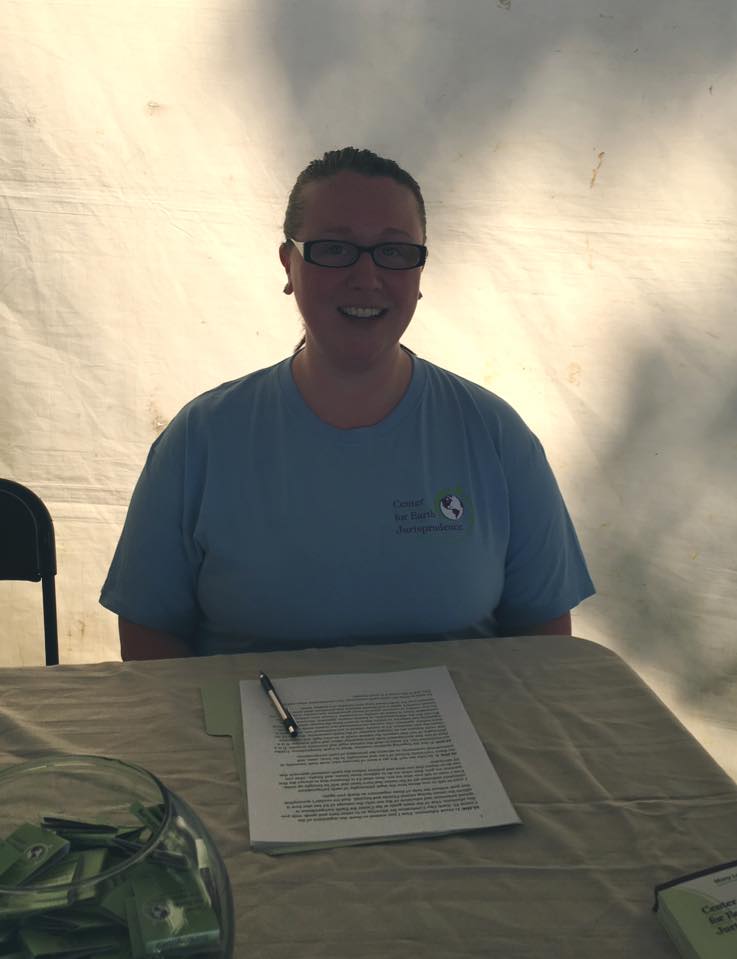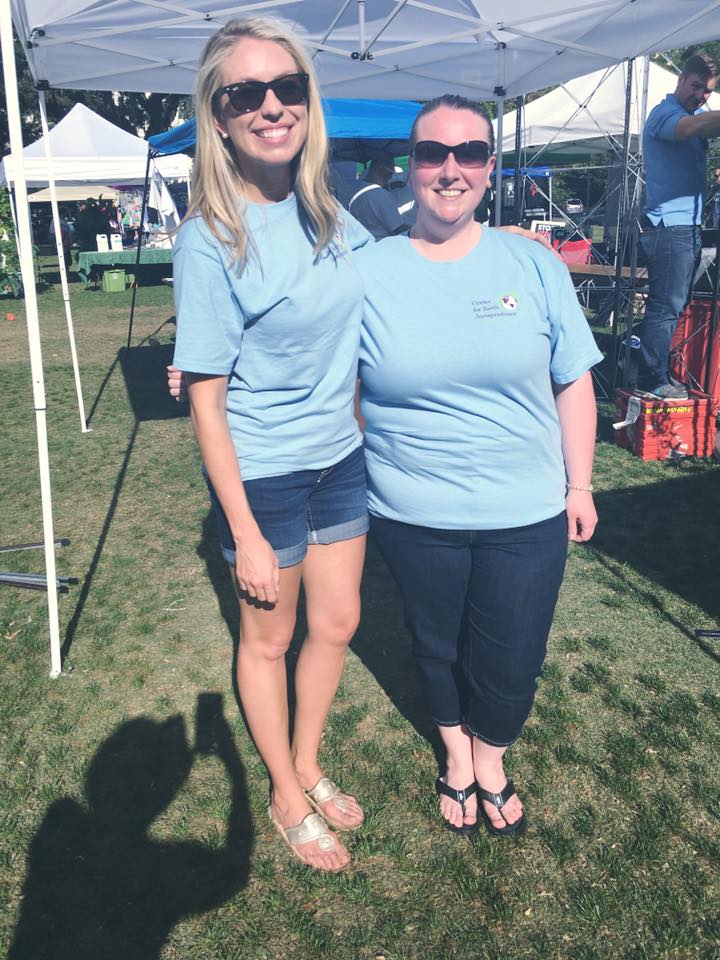On September 30, 2016, the CEJ team attended and participated in an event that Dr. Robert Knight of the Florida Springs Institute called “the most significant springs event in a decade.” The Florida Springs Restoration Summit, organized by the Florida Springs Council, was a two-day conference in Ocala that brought together scientists, legal experts, agency & environmental organization managers, water advocates, and artists to learn about the problems facing Florida’s freshwater springs and to brainstorm ways to solve these problems. The keynote speakers were noted photographer and author John Moran and U.S. Congresswomen Gwen Graham.
Traci Deen, Margaret Stewart, and Dr. Robert Knight
Katie Tripp of the Save the Manatee Club, who chairs the Florida Springs Council’s Education Committee explained, “The vision for the Summit is for people to leave with a plan of action that can serve as a roadmap forward as well as a summary of where we’ve been and where we are now.”
The CEJ team was present and active throughout the Summit. Our Director, Traci Deen, led the Legal Remedies Panel and our Staff Attorney, Rob Williams, presented on the Legislative Initiatives panel. Additionally, two of CEJ’s Advisory Board members, Clay Henderson and Lucinda Merritt, participated in the Summit.
Legal Remedies Panel
The CEJ Team: Traci Deen, Rob Williams, Margaret Stewart
CEJ’s Director, Traci Deen, introduced and led this incredible panel filled with leading experts on the legal options available for effective springs protection and restoration. The panel included attorneys Clay Henderson, John Thomas, John Joplin, and activist, Linda Young. As Traci explained, this esteemed panel would address what laws are working, what laws are not working, and what litigation is ongoing now to protect water in Florida.
Dr. Robert Knight, John Thomas, Linda Young, Clay Henderson, John Joplin, Traci Deen
CEJ Advisory Board member, Clay Henderson, gave a powerful opening presentation on the legal remedies panel. Clay, an environmental attorney, is the Executive Director of the Stetson Institute for Water and Environmental Resilience. He has sponsored or co-authored most of the natural resource protection provisions in the Florida Constitution, including Amendment 1, the largest voter-approved conservation funding initiative in our nation’s history, and the creation of the Fish and Wildlife Conservation Commission. He led the development of nationally-recognized land conservation programs, including Volusia Forever (1986 and 2000), Florida Communities Trust (1990), Preservation 2000 (1991) Florida Forever (1999), and has negotiated more than 300,000 acres of lands now part of national and state parks, forests, and wildlife refuges.
CEJ Advisory Board Member, Clay Henderson
As Clay explained, effective legal mechanisms are still available, for the most part. The problem is the current political reality. For example, the 2016 Water Bill entitled The Florida Springs and Aquifer Protection Act (SB 552), provided some significant tools for springs protection and restoration. However, it needs more oversight, better implementation, and a number of amendments. Senator David Simmons described the Act during the legislative initiatives panel: "It's a home run, but we're only in the first inning. We have [] innings to go."
Clay explained that as the co-author of the “good” Amendment 1, he is disappointed that it hasn’t lived up to his expectations. We need more oversight, accountability, and transparency of the spending of Amendment 1 funds. There is approximately $1 billion for springs restoration at stake. From these examples, we see that as Clay explained, there are many legal tools available, but we need to ensure they are implemented effectively going forward.
When asked how advocates can utilize the legal remedies available for springs protection and restoration, Clay has three suggestions: (1) Engage, (2) perfect your legal standing, and (3) don't be afraid to pull the trigger.
Legislative Initiatives Panel
Rob Williams, CEJ’s staff attorney, discussed the current legislative initiatives available to us and how they are working.
“You cannot just buy a spring, you need to protect the spring shed.”
According to Rob, “Florida Forever has been fantastic for our springs. Since 1991, the First Magnitude Springs Project under Florida Forever has acquired roughly 9500 acres of land at a cost of over $100 million. It thereby protected some of our finest springs.” As Rob explained, this is a testament to what can be done when the tools available to us are implemented and executed effectively. However, he continued, “There are still 6500 acres to go. That’s something we need to do.” There are still essential areas that need to be acquired for sufficient springs protection.
We need more comprehensive planning in our land acquisition and springs protection/ restoration efforts. The lack of cohesive, large-scale planning was addressed as a major impediment to springs protection and restoration by many of the panelists throughout the Summit.
Keynote Presentations
Friday’s keynote speaker was photographer and author, John Moran. As usual, John brought with him some truly stunning pictures of Florida’s incredible ecosystems.
However, as his presentation explained, his pictures are increasingly becoming more about the destruction of Florida’s environment than the beauty of it. What used to be clear and blue is now murky and green. Elevated nitrate levels and overall ecological degradation is quickly destroying all that makes Florida unique and beautiful.
As John so poignantly explained:
“In Florida, ecological destruction is nothing less than economic suicide.”
CEJ's Traci Deen and the Honorable Gwen Graham
Saturday’s keynote speaker was U.S. Congresswoman, Gwen Graham. Representative Graham delivered an informative, passionate, and direct address to the Summit’s attendees.
She began describing her own personal experiences and appreciation of Florida's environment, instilled in her at a young age by her father, Senator Bob Graham. She not only eloquently illustrated her own love and appreciation for Florida's natural wonders, but explained that the environmental degradation we are seeing across the state is merely one symptom of a much larger disease. She stated her belief that the absence of bipartisan environmental policies, like those present during her father's time in office, have lead to the current, critical state of Florida's ecosystem. She explained that she, like most of us, worries about future generations and whether they will be able to enjoy and appreciate Florida's natural treasures as we have. As she so emphatically stated:
“The springs will not protect themselves. It’s our responsibility to ensure that they’re here for future generations and for all Floridians to enjoy.”
She passionately stated to the audience that protecting our natural treasures is not just policy, but personal. She then quoted one of our favorite authors, Marjorie Kinnan Rawlings:
“The earth may be borrowed, but not bought. It may be used, but not owned.”
Congresswoman Graham ended her address with words of hope and encouragement, stating that the collection of people in the room gave her confidence in the future protection and restoration of Florida's springs.
Overall, the Summit was insightful and inspirational-- and frankly, we couldn't agree more with Congresswoman Graham in feeling optimistic at its conclusion, due in large part to the springs advocates we were with in that very room.
LWVOC's Marty Sullivan; CEJ's Margaret Stewart, Traci Deen, & Rob Williams; Florida Springs Institute's Heather Obara & Dr. Robert Knight











































